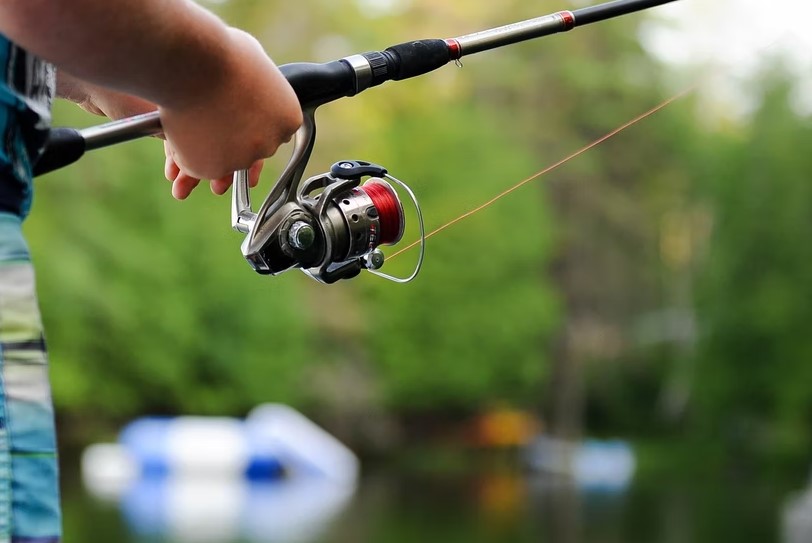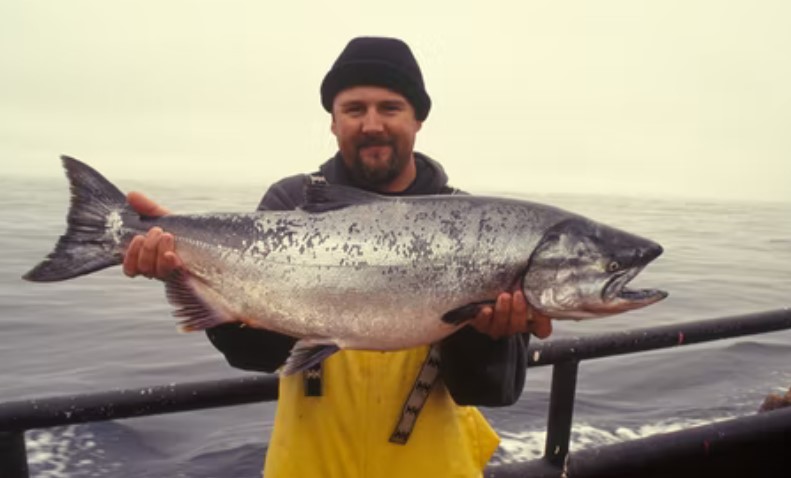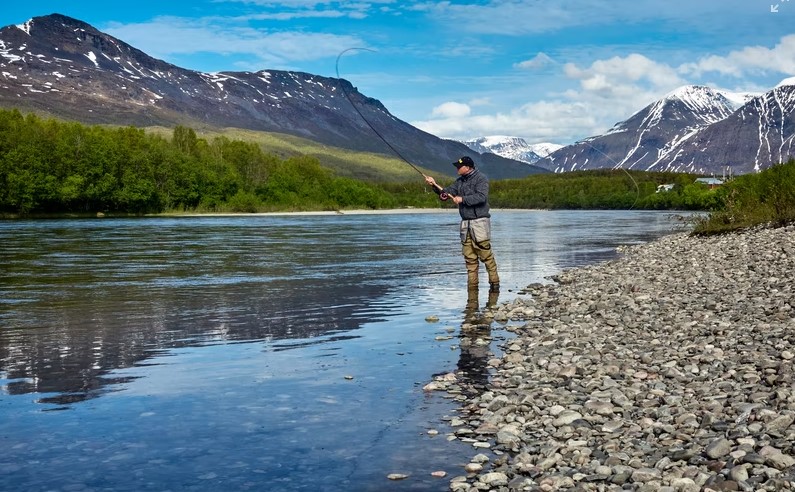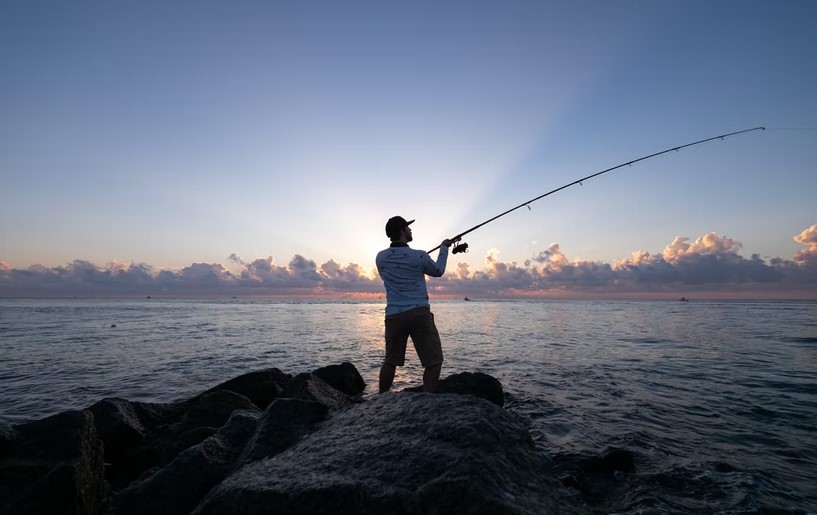6 min read
1159 words
Every angler dreams of landing a big catch. And once you master the basics of fishing, it is time to up your game and target the large species. A big fish means more meat on the table, and if it is ‘catch and release,’ it is an impressive story to share. But, you must have the correct strategies as a big catch means a fierce fight. Here I share with you the 5 tips to maximize your chances to Catch Big Fish .
5 Tips on how to Catch Big Fish
1. Have proper fishing gear

You should acquire the right gear before you think of your fishing spot. Buy tackles capable of handling big catches; from the ability to cast to where your target species live to reeling them in to the shore.
The main fishing gears to tailor for a bigger hunt include the fishing reel, fishing rod, and fishing line. Check the weight specifications of these fishing gears to ensure that they can handle the weight of your target trophy fish.
Here are some guidelines for picking the proper fishing gear for big fish:
- Preferably use braided or fluorocarbon line– These fishing lines have stronger tensile strength per unit of line diameter compared to monofilaments lines. Also, they cannot break easily, and you get more fishing line for fighting big catches, which can easily pool off the line up to +100 yards.
- Use thick monofilament leader if using braided lines- Braided lines give you the capacity to fight big catches, but the fish can easily see it. Use 4-6 feet of monofilament line about +80 pound tests as the leader to ensure the fish doesn’t notice your mainline. Opt for steel leader if targeting species with sharp teeth.
- Use saltwater fishing pliers to unhook your catch- Some big catches, such as the shark and bluefish, have sharp jaws that can easily take off your fingers if you dare get close. Saltwater fishing pliers are the best as they are strong enough to handle huge species.
- Use hooks rated for trophy catch- High-carbon hardened steel hooks are the best when targeting big species as they cannot break or bend easily.
2. Find a suitable water body and choose the right fishing spot
You might have the right tackle, but where you are fishing is letting you down. If you can’t present your lure in front of a big catch, there is no way to reel it in. Research on the internet the rivers, lakes, and ocean points where there is an abundance of large fish. Once you get to your fishing location, cast in big depths as trophy species are found in deeper waters.
You can use a fish finder to find deeper waters or estimate using watercolour as deeper waters tend to be darker. If fishing along the shore, fish from steeper parts as steepness goes underwater.
Make sure to focus on the transition zone between shallow and deeper waters as the big fish hang there waiting for their prey. Try to cover as much area as possible, since big fish can cover miles within a day.
3. Go fishing during the proper season and time

Being at the ideal fishing spot doesn’t guarantee a catch if you are there at the wrong season and time of the day. For instance, fish are inactive and difficult to catch early or late in the year when fishing in northern climates. And, fishing midday in July in Southern America minimizes your chances of hooking up a big catch.
So, always research peak time and season based on your chosen location to increase your chance of hooking a trophy fish.
4. Use the suitable lure and presentation depending on your target species
Catching a fish means attracting them to bite for a hook. Use live baits such as worms, bait-fish, and minnows as big fish are attracted to them since they resemble what they feed on.
If live baits are not allowed in your fishing area, opt for big lures such as a huge candle-fish jig, a large spinner, and a big spoon.
Once you’ve picked your lure or bait, you have to swing with the right action to get the catch. The appropriate method depends on your target species, but below are general rules for presenting lure when fishing big catch.
- Begin by presenting your lure at slow speed– Big fish are very cautious, and aggressively presenting your lure can easily spook them. Start slowly and carefully, and if you don’t land a catch, you can progressively present your lure faster.
- Give time for the fish to eat the lure/bait- Setting up the hook immediately you feel the bite might just rip off the lure out of the fish’s mouth. Take some time until you are sure the fish got the lure well, and then apply pressure at once to hook it firmly into the fish.
- Keep your fishing line straight- Be careful when turning your boat to ensure your lines don’t cross with those of your fellow anglers. If you hook up a fish with lines crossed, you might lose the catch as you reel it in while getting rid of the tangles.
- Consider using chumming fishing methods as it always attracts bigger catches. You can also try trolling or casting your lineup current.
5. Reel in the catch carefully

Hooking up a catch is different from landing one as some anglers lose them as they reel in. Here are the general tips to help you land your catch successfully:
- Set your drag appropriately– Apply more drag if the fish is running the line too fast, and lighten it up if your rod is bending too much.
- Fight the fish according to the waters you are in- Pull the fish up when in shallow water, reel away from underwater structures, and adjust your boat in open waters to get the best angle to reel it in.
- Apply pressure by keeping your rod high and pointed towards the catch- Keeping the rod high and pointed towards the fish ensures the catch doesn’t throw the hook.
- Use a big gaff or net to bring your catch onboard and unhook your lure– Not having the net might cause you to lose the fish after getting it to the boat or, worse, get hooked as you try to unhook it.
- Kill it safely- If it is not ‘catch and release,’ always kill the fish humanely by using a spike or billy club. Bleed the fish by throating it if you intend to eat.
- Do not jerk while reeling- Doing so could cause a slack-line, which can cause poorly hooked fish to pop off.
Key Insights & Takeaways
Catching a big fish should not be a dream anymore. Use the above tips, head out and land a big catch like a pro. Above all, practice patience, put more time, and before you realize it, you will be sharing successful trophy fishing stories with your friends and loved ones!
